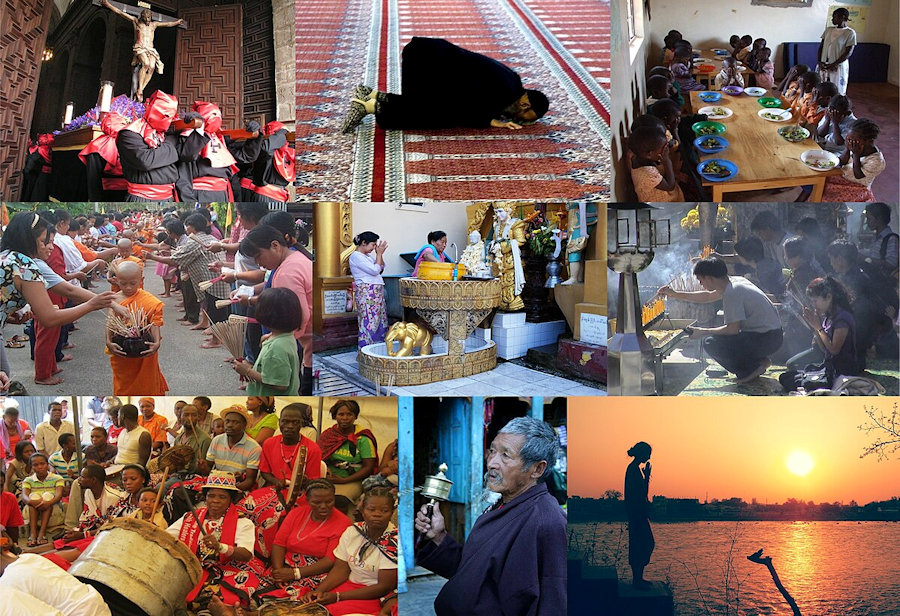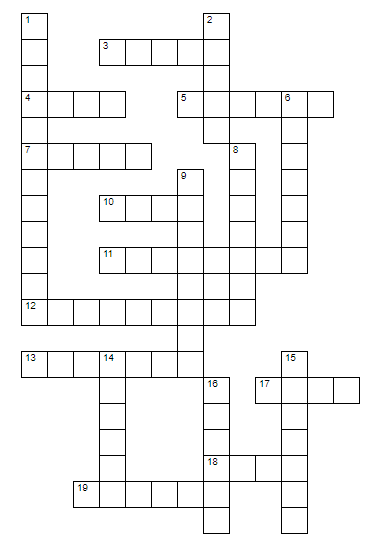
Classic art masterpieces used as illustrations

Challenge: Can you solve this puzzle even if you do not have the textbook and did not go on any of the field trips?

| ACROSS | ||
| 3 | Religious books of Hinduism | |
| 4 | The number of "noble truths" in Buddhism | |
| 5 | A Chinese system of thought which teaches freedom from desire, effortless action, and simplicity. In its philosophical form, it is rational, contemplative, and nonsectarian, while in its religious form. it is magical, cultic, esoteric, and sectarian | |
| 7 | A hierarchical social ordering of people (with no options for upward mobility) that is a fundamental part of the Hindu worldview | |
| 10 | In religions on the Indian sub-continent, the term applied to a holy person (man or woman) acknowledged to be in deep union or communion with a deity | |
| 11 | The major religious tradition of India that is a syncretistic body of religious, philosophical, and social doctrines | |
| 12 | A group that traces its origins to Joseph Smith in the middle 1800s. It says that God is a self-made, finite deity with a material body. | |
| 13 | An umbrella term for indigenous religions that are sometimes called "primal religions" | |
| 17 | The number of times a day that Muslims are supposed to pray | |
| 18 | A set of psychosomatic theories and techniques for doing meditation in both Hinduism and Buddhism | |
| 19 | What Hindus and Buddhists call their house of worship | |
| DOWN | ||
| 1 | Principles of conduct based on the teachings of a Chinese man who saw human beings as rational and moral creatures who owe obligations to society and the state | |
| 2 | A monotheistic religion that began with a prophet on the Arabian peninsula. Its followers often see religion and state as expressions of the same, single reality that harmonize well with each other. | |
| 6 | An eclectic religion of India founded in the 16th century through the teachings of ten gurus | |
| 8 | The monotheistic religion of a Semitic middle-eastern people who have the Talmud as one of their authoritative documents | |
| 9 | Suffering is inseparable from existence but inward extinction of the self and the senses culminates in a state of illumination called nirvana | |
| 14 | The house of worship for Muslims | |
| 15 | A cosmological theory expressing the interdependence of opposite movements in nature, society, and human beings. The concept appears in Confucianism and Taoism as well as in Chinese folk religions. | |
| 16 | A common practice in almost all religions, this is one of the "Five Pillars" of Islam. | |
-- Howard Culbertson, hculbert@snu.edu
Studying other religions as an evangelical Christian must be done with a delicate balance of conviction, respect, and openness. Here are some attitudes to consider:
More word puzzles: Crosswords plus word searches and word scrambles
![]() Looking for other materials related to World Religions? Click here!
Looking for other materials related to World Religions? Click here!